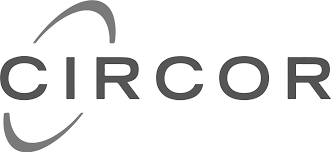As a home service professional, providing top-notch customer service goes beyond just completing tasks. One effective way to ensure both you and your clients stay on the same page is by creating a service checklist.
Not only does it clarify expectations, but it also helps build trust and improve the overall experience. In this guide, we’ll walk you through the process of creating a service checklist that you can share with your clients, ensuring smooth communication and successful project outcomes.
Why Service Checklists Are a Game Changer for Home Service Professionals

Before we dive into the details of how to create a service checklist, let’s first explore why checklists are so effective. Service checklists are more than just a formality; they are a tool for success. Here’s why:
- Clear Expectations: A checklist sets clear expectations, reducing misunderstandings or overlooked tasks.
- Enhanced Customer Satisfaction: Clients will appreciate the structure and transparency, which can lead to higher satisfaction.
- Efficiency: It ensures that every important step in the service process is followed, reducing the chance of mistakes or missed tasks.
- Professionalism: A well-crafted checklist positions you as an organized, professional service provider.
Tip: Even if you’re a solo contractor or a small team, a service checklist adds an element of structure that reflects well on your brand.
Step 1: Define the Scope of the Service
The first step in creating a service checklist is defining the exact scope of work that you will be performing. Whether you’re a plumber, electrician, landscaper or any other home service professional, the key to success is clarity. A detailed list of tasks helps both you and your client understand what will and will not be included in the service.
For example, if you’re a plumber, your checklist might include:
- Inspection of pipes for leaks
- Repair of leaky faucets
- Installation of water-saving fixtures
By providing this detailed breakdown, your client knows exactly what to expect. If something falls outside the scope, you can easily highlight it upfront.
Step 2: Include Key Milestones and Deadlines
A checklist isn’t just a list of tasks—it should also include any important milestones and deadlines associated with the project. When will the job start? When should it be completed? Breaking down the process into specific phases gives your client a timeline to work with and helps manage their expectations.
For example:
- Day 1: Initial assessment and consultation
- Day 3: Completion of all plumbing work
- Day 5: Final inspection and quality check
Including deadlines helps clients feel more confident that you’re on track to meet their needs within the agreed time frame.
Actionable Tip:
When setting deadlines, always consider buffer time. Unexpected delays can happen—be realistic with your timeline to avoid underpromising and overdelivering.
Step 3: Add Details for Each Task
Each task listed on your checklist should come with a description of what needs to be done. A vague checklist like “Repair sink” doesn’t provide enough information. Be specific. For example:
- Repair Kitchen Sink: Tighten faucet connections and check for any leaks around the base. Ensure the drain is functioning properly and clean out any debris.
- Install New Water Heater: Disconnect old unit, install new unit and perform necessary electrical and plumbing connections. Test the new system to ensure it operates correctly.
These details give your client peace of mind that you know exactly what needs to be done and how to do it. It also protects you from scope creep, where clients might ask for “extra” work that was never agreed upon.
Step 4: Communicate Costs and Potential Add-Ons
Clients will appreciate knowing about costs upfront. Including pricing for each item or a range of expected costs will prevent surprises later. However, it’s important to clarify that additional costs may arise if unexpected issues are discovered.
- Base Service Cost: $250 for standard plumbing repairs
- Potential Add-Ons: $50 for parts replacement (if needed)
- Possible Extra Charges: $100 if there are unexpected complications such as replacing rusted pipes.
By being transparent about costs, you’ll foster trust and demonstrate your professionalism.
Remember:
Discuss add-on services upfront to avoid any confusion about the final price. If something is going to cost more, let your client know as soon as possible!
Step 5: Include Safety and Cleanliness Guidelines
Safety and cleanliness are often top priorities for home service clients. Make sure to include guidelines or commitments around safety measures and the cleanliness of the worksite. For example:
- Safety: Use proper personal protective equipment (PPE), such as gloves and masks, as required by safety protocols.
- Cleanliness: At the end of the job, the work area will be cleaned and left free of debris. We ensure that your home is as clean as we found it.
This not only helps set expectations but also shows your client that you take their safety and the integrity of their home seriously.
Once your checklist is complete, it’s time to share it with your clients. A great way to do this is by sending the checklist via email, as part of a formal proposal or even in a pre-service agreement document. For some service providers, it may also be helpful to have clients sign off on the checklist as part of the agreement process.
You can also integrate the checklist directly into your project management system (if you use one) so both you and your clients can track progress in real time. Some platforms even allow you to send automated reminders or updates as tasks are completed.
Actionable Tip:
Use digital tools like Google Docs or specialized software to create shareable checklists that your clients can access anytime, anywhere. This fosters transparency and keeps everyone on the same page.
Step 7: Follow Up and Adjust as Needed
Once the checklist has been shared and the service has started, remember that the process doesn’t stop there. Regular communication is key to ensuring things stay on track. Follow up with your clients periodically, especially if there are any changes or issues that arise during the project.
If something on the checklist changes or requires adjustment, make sure to update the client and adjust the checklist accordingly. This ensures they always have an up-to-date record of the work being done.
In Conclusion: What You Need to Do Now
Creating and sharing a service checklist with your clients might sound like a small task, but it can have a huge impact on your business. By following these steps, you’ll improve customer satisfaction, enhance communication and position yourself as a professional in your field.
Here’s what you need to do now:
- Create your own service checklist for your specific services.
- Share it with your clients and ensure they understand it.
- Maintain clear, consistent communication throughout the project.
- Follow up and adjust as necessary to keep everything on track.
By doing so, you’ll build a reputation for being organized, transparent and reliable. Clients will appreciate your attention to detail and your business will thrive as a result.
Now, go ahead and create that checklist—your clients will thank you!






























